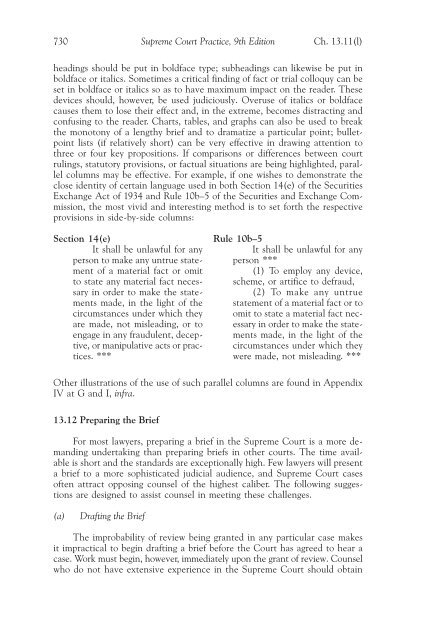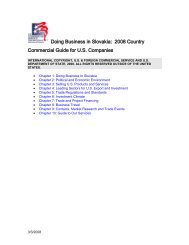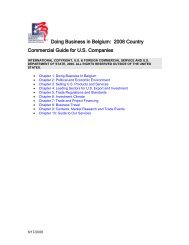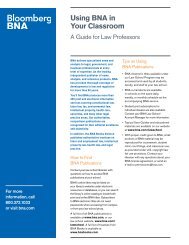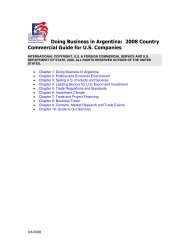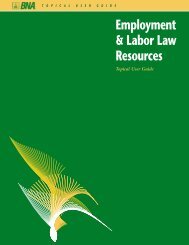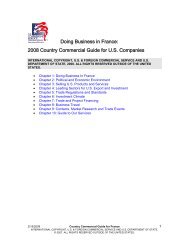Create successful ePaper yourself
Turn your PDF publications into a flip-book with our unique Google optimized e-Paper software.
730 Supreme Court Practice, 9th Editi<strong>on</strong> Ch. 13.11(l)<br />
headings should be put in boldface type; subheadings can likewise be put in<br />
boldface or italics. Sometimes a critical finding of fact or trial colloquy can be<br />
set in boldface or italics so as to have maximum impact <strong>on</strong> <strong>the</strong> reader. <str<strong>on</strong>g>The</str<strong>on</strong>g>se<br />
devices should, however, be used judiciously. Overuse of italics or boldface<br />
causes <strong>the</strong>m to lose <strong>the</strong>ir effect and, in <strong>the</strong> extreme, becomes distracting and<br />
c<strong>on</strong>fusing to <strong>the</strong> reader. Charts, tables, and graphs can also be used to break<br />
<strong>the</strong> m<strong>on</strong>ot<strong>on</strong>y of a lengthy brief and to dramatize a particular point; bulletpoint<br />
lists (if relatively short) can be very effective in drawing attenti<strong>on</strong> to<br />
three or four key propositi<strong>on</strong>s. If comparis<strong>on</strong>s or differences between court<br />
rulings, statutory provisi<strong>on</strong>s, or factual situati<strong>on</strong>s are being highlighted, parallel<br />
columns may be effective. For example, if <strong>on</strong>e wishes to dem<strong>on</strong>strate <strong>the</strong><br />
close identity of certain language used in both Secti<strong>on</strong> 14(e) of <strong>the</strong> Securities<br />
Exchange Act of 1934 and Rule 10b–5 of <strong>the</strong> Securities and Exchange Commissi<strong>on</strong>,<br />
<strong>the</strong> most vivid and interesting method is to set forth <strong>the</strong> respective<br />
provisi<strong>on</strong>s in side-by-side columns:<br />
Secti<strong>on</strong> 14(e)<br />
It shall be unlawful for any<br />
pers<strong>on</strong> to make any untrue statement<br />
of a material fact or omit<br />
to state any material fact necessary<br />
in order to make <strong>the</strong> statements<br />
made, in <strong>the</strong> light of <strong>the</strong><br />
circumstances under which <strong>the</strong>y<br />
are made, not misleading, or to<br />
engage in any fraudulent, deceptive,<br />
or manipulative acts or practices.<br />
***<br />
Rule 10b–5<br />
It shall be unlawful for any<br />
pers<strong>on</strong> ***<br />
(1) To employ any device,<br />
scheme, or artifice to defraud,<br />
(2) To make any untrue<br />
statement of a material fact or to<br />
omit to state a material fact necessary<br />
in order to make <strong>the</strong> statements<br />
made, in <strong>the</strong> light of <strong>the</strong><br />
circumstances under which <strong>the</strong>y<br />
were made, not misleading. ***<br />
O<strong>the</strong>r illustrati<strong>on</strong>s of <strong>the</strong> use of such parallel columns are found in Appendix<br />
IV at G and I, infra.<br />
13.12 Preparing <strong>the</strong> Brief<br />
For most lawyers, preparing a brief in <strong>the</strong> Supreme Court is a more demanding<br />
undertaking than preparing briefs in o<strong>the</strong>r courts. <str<strong>on</strong>g>The</str<strong>on</strong>g> time available<br />
is short and <strong>the</strong> standards are excepti<strong>on</strong>ally high. Few lawyers will present<br />
a brief to a more sophisticated judicial audience, and Supreme Court cases<br />
often attract opposing counsel of <strong>the</strong> highest caliber. <str<strong>on</strong>g>The</str<strong>on</strong>g> following suggesti<strong>on</strong>s<br />
are designed to assist counsel in meeting <strong>the</strong>se challenges.<br />
(a) Drafting <strong>the</strong> Brief<br />
<str<strong>on</strong>g>The</str<strong>on</strong>g> improbability of review being granted in any particular case makes<br />
it impractical to begin drafting a brief before <strong>the</strong> Court has agreed to hear a<br />
case. Work must begin, however, immediately up<strong>on</strong> <strong>the</strong> grant of review. Counsel<br />
who do not have extensive experience in <strong>the</strong> Supreme Court should obtain


